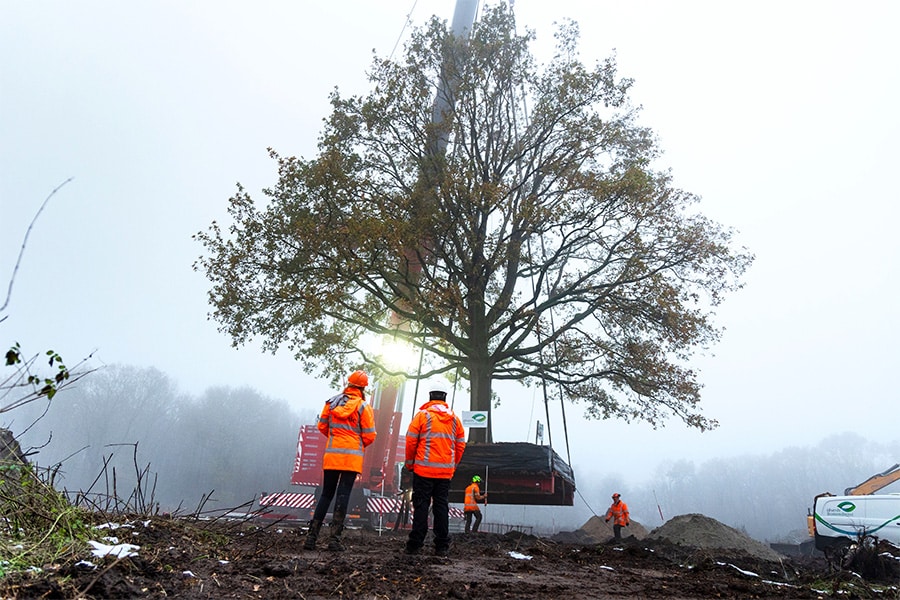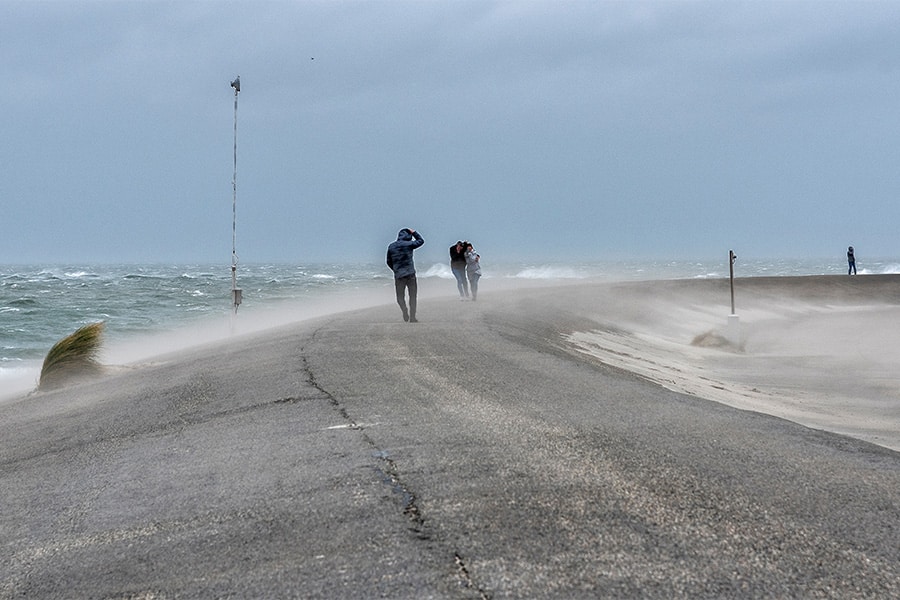
Guide works should prevent collisions with ships
Funnel construction for guidance of ships
Dozens of ships pass through the lock at Den Oever every day. There is therefore a chance that a ship will veer off course and hit the lock. The 30 meter long guide works, each weighing 45 tons, must prevent this. In view of its long track record, Hakkers BV from Werkendam designed, prefabricated and installed these guide rails.

Hakkers is no stranger to the 'terrain' of the Afsluitdijk. Previously, the family business from Werkendam was responsible for the replacement of almost 800 linear meters of jetties and brake and guide works at the locks in the Afsluitdijk. It also worked on the dike reinforcement of the 900-meter-long harbor dike in Den Oever. For this, Hakkers designed and placed all sheet pile walls, anchors and realized a completely new coupure. "On the border of land and water we feel most at home. We therefore specialize in constructive hydraulic engineering," explains Hein van Laar, commercial director. "Think of sea quays, inland navigation jetties, moorings for ships and quay works. We design, provide prefabrication and execution on site."
25 years Maintenance
For the new floodgate at Den Oever, Hakkers was commissioned by the Levvel construction consortium to install a trap structure in the form of a floating guideway designed to guide shipping traffic. The major challenge in the design of the guidework was the maintenance period of 25 years. Tim van der Aart, project coordinator at Hakkers: "In the design, we already thought about the maintenance for the next 25 years. That led to specific choices. For example, we applied a preservation that will last 25 years, applied protective strips at stairways and applied more wear-resistant plastic gratings instead of steel gratings. We also applied aprons with wear shingles that can also be removed in their entirety when replaced or maintained."
Safety above all
The guideways were prefabricated in Werkendam and then transported by water to Den Oever. There on site, they had to be installed in the space of just a few days. "The placement of the floating parts is very precise work. There is hardly any tolerance because otherwise the guide works do not connect to the lock. Moreover, the lock must not be damaged during placement." In order to ensure the safety of regular shipping, which often had to continue as usual, a temporary construction of auxiliary retaining structures was made in Kornwerderzand, for example. This was also for the safety of the people working there. Van der Aart: "Here the experience gained from previous projects came in handy. The Afsluitdijk is an iconic project of Rijkswaterstaat. We are proud to have been able to use our expertise to the maximum for this too."



